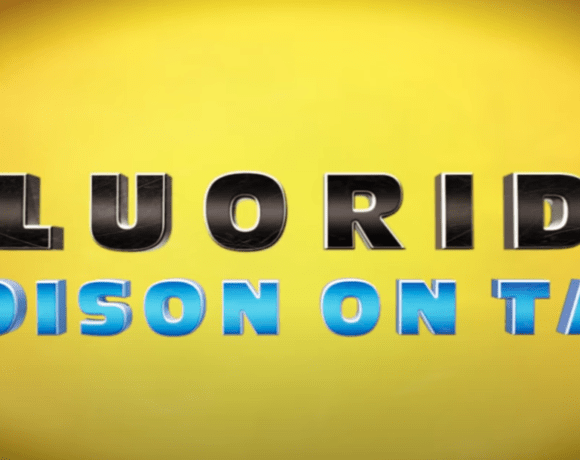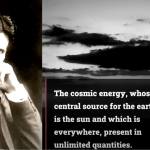In her 2012 documentary “Fluoride: The Bizarre History“, Darlene Cheryl embarks on an enlightening journey through the complex narrative of fluoride, a common chemical used in various industries. This article will delve into the first 14 minutes of this remarkable documentary, focusing on the purported health effects of fluoride and its ever-present role in our lives.
Fluoride is almost universally recognized for its dental health benefits, but Cheryl brings a different perspective to the table. After a 30-year deep dive into the world of fluoride, she suggests that it is not as innocuous as we’ve been led to believe.
In the documentary, Cheryl presents her personal experience with fluoride sensitivity, including a history of allergies, asthma, arthritis, and gastrointestinal issues that subsided when she started avoiding fluoride as much as possible. She argues that she’s not alone, alluding to a community of individuals diagnosed with systemic fluoride poisoning who share similar symptoms.
The documentary also presents historical data and reveals surprising increases in daily fluoride intake over the years. The natural assumption that fluoride concentrations in water directly correlate with the amount of fluoride ingested is challenged by the increasing presence of fluoride in dental products and pesticides.
Fluoride’s reputation as a “protected pollutant” is also addressed. It’s stated that the U.S. government propagated the image of fluoride as a safe cavity fighter during the era of the Manhattan Project. This reputation has protected fluoride from more stringent regulations, leading to its ubiquitous presence in our environment and diet.
The documentary further states that fluoride can cause cosmetic defects in children’s teeth if they consume more than the recommended daily intake. However, this is only detectable once the permanent teeth start to grow in, making early detection nearly impossible.
Finally, the documentary highlights the increasing presence of fluoride in our food and water supply, pointing out that fluoride is a common residue in pesticides. This is attributed to outdated policies and regulations that fail to account for the overall increase in fluoride exposure from various sources.
To summarize, “Fluoride: The Bizarre History” provides an eye-opening exploration into the complex and often overlooked world of fluoride. It serves as a stark reminder of how critical it is to continuously reassess our understanding and regulations of common chemicals, such as fluoride, to ensure public health and safety.
As the documentary continues beyond the first 14 minutes, it is likely to delve deeper into these issues, further challenging our understanding of fluoride and its impact on our health. The insights provided can be instrumental in stimulating further research and possibly influencing policy changes regarding fluoride use and exposure.
After the first fourteen minutes, the documentary continues to unfold by presenting interviews with a variety of experts in the field. Scientists, health professionals, and environmental researchers share their perspectives on the effects of fluoride on human health.
The documentary employs a balanced approach by showcasing a diversity of opinions. Some experts argue that the benefits of fluoride in preventing dental caries are undeniable, and that the risks are often overblown by media and misunderstanding. They present a range of scientific studies supporting their views, showing the positive impact of fluoride on dental health when used in moderation.
On the other hand, the documentary also gives a platform to experts who are critical of the widespread use of fluoride. They point to studies showing potential adverse health effects from long-term fluoride exposure, such as fluorosis, an impact on bone health, and potential neurotoxic effects. They express concerns about the lack of control individuals have over their fluoride exposure, particularly when it’s added to public water supplies.
Moreover, the documentary touches on the environmental implications of fluoride use. Experts discuss the effects of fluoride on aquatic ecosystems, as fluoride can be washed into bodies of water from various sources, including artificially fluoridated water and toothpaste. They present research showing potential harm to aquatic organisms due to excessive fluoride levels in their habitats.
The film also investigates the historical and political aspects of fluoridation. It looks at the initial decisions to add fluoride to public water supplies and how the policy has evolved over time. This section includes interviews with policy makers and historians who explain the context and reasons behind these decisions.
The documentary continues to keep viewers engaged by interspersing the expert interviews with personal stories from individuals who believe they have been negatively affected by fluoride exposure. Their heartfelt stories add a human element to the scientific and political discourse, making the potential risks of fluoride more tangible for viewers.
As the documentary reaches its final stages, it provides a forum for discussion about potential solutions and alternatives to current fluoride use and policies. Ideas such as better public education about fluoride use, options for reducing fluoride levels in public water supplies, and the development of alternative methods for dental health care are explored.
Through its thorough exploration of the subject, the documentary serves as an eye-opening resource for viewers, encouraging them to think more critically about the use of fluoride in their daily lives. It also highlights the need for continued research and dialogue about the potential health and environmental implications of fluoride use.
As the documentary draws to a close, it highlights the importance of informed decision-making, not just on an individual level but also on a societal level. The filmmakers underscore the importance of transparency and accurate information when making public health policies, particularly those that involve something as widespread as water fluoridation.
The concluding section of the documentary covers the regulatory aspects of fluoride usage. It discusses how different countries have different regulations concerning fluoride, with some choosing not to fluoridate their water supplies at all due to health concerns, while others continue to do so, citing dental health benefits. The regulations governing the usage of fluoride in consumer products like toothpaste and mouthwash are also examined.
In the final minutes, the documentary circles back to the individuals who shared their personal stories, providing updates on their health and the changes, if any, they’ve made to their fluoride exposure. These updates serve to remind the viewer of the real-life implications of the scientific and policy debates about fluoride.
The film ends with a call to action, encouraging viewers to educate themselves and to push for transparency and research on fluoride’s health effects. It suggests that viewers consider their personal fluoride usage and the policies in their local areas, and to get involved in the conversation if they feel compelled.
Despite its runtime, the documentary never loses its grip on the viewer. The combination of scientific insights, historical analysis, personal stories, and thought-provoking questions ensures that viewers remain engaged till the end. By presenting a balanced overview of the topic, the film stimulates critical thinking and empowers viewers with knowledge, while leaving them with lingering questions about the ubiquitous element that is fluoride.
As the credits roll, it’s clear that the documentary has achieved its goal: to shed light on the multifaceted issue of fluoride use and its implications.
For those who wish to delve deeper into the topic, there are numerous resources available. The Fluoride Action Network is an excellent starting point, providing comprehensive information on the latest research and news related to fluoride.


















